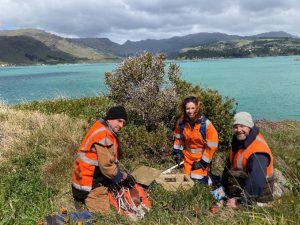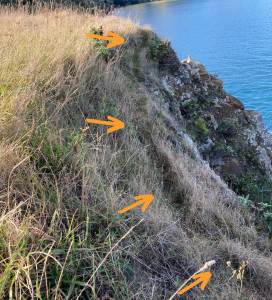
LPC’s predator control programme is in full force with over 40 traps active in Lyttelton.
We are targeting possums, mustelids (stoats, weasels and ferrets) and rodents, which are all predators of New Zealand’s native species.
Our Environment Team has been working with environmental planning and design consultancy Boffa Miskell to map areas of interest.
They identified Battery Point as a key area, as pests are funnelled down from the hills to Gollans Bay, which is home to lizard and gecko populations, as well as the coal area, where we are encouraging white-flippered penguins to nest.
The photo below shows the track along the cliffside that was made by possums, who usually follow the same route each night.

The Port Saddle is another area of importance as we continue our work to regenerate the 17ha of land with native trees.
Possums are devastating for vegetation, with the total New Zealand population eating 21,000 tonnes of foliage a night, so protecting our trees is key for the successful regeneration of the saddle.
Environmental Advisor Charlotte Jones says the programme is having pretty good results so far, having caught a range of species.
“We have even caught two weasels so far which is great as they are smart animals and are notoriously difficult to catch.”
Charlotte is no stranger to pest control, having completed her research project for her Masters in Biological Sciences on lure development.
“I worked with the Department of Conservation (DOC) on testing predator lures, looking at the chemical properties with the goal of making a long-lasting product to use,” says Charlotte.
“It’s great to continue work in this area now at LPC, technology is always developing so it’s important we are on top of the latest techniques.”
As part of our Sustainability strategy, LPC is striving to be biodiversity-positive, and pest control is a large part of this.
In future, the team is looking to expand the current trapping area, to more non-operational areas, such as further down Sumner Road.